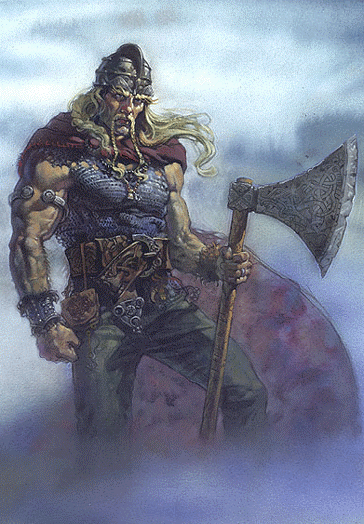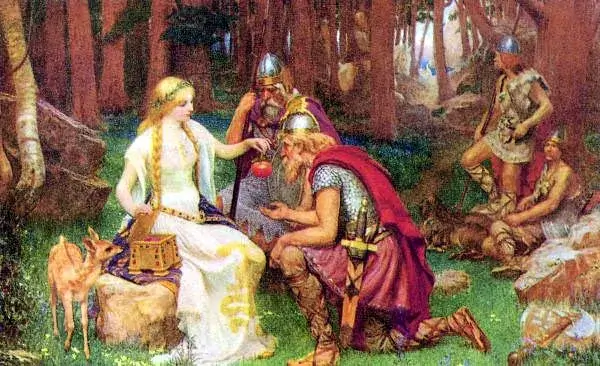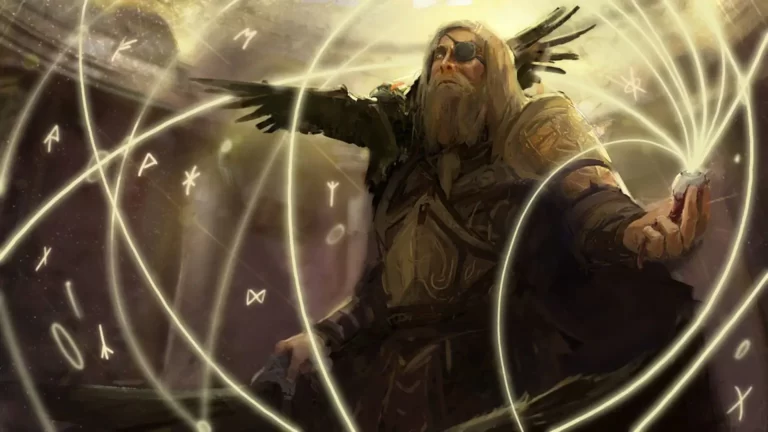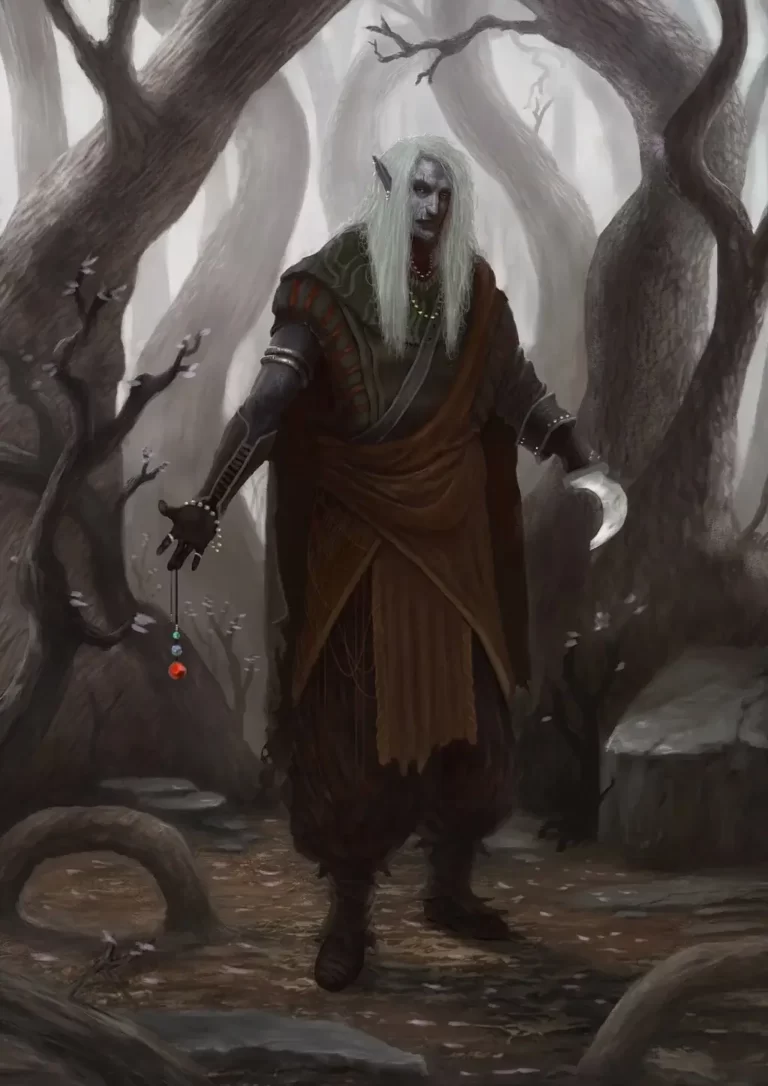Garmr Norse Mythology
Garmr is a monstrous wolf in Norse mythology. He is the guardian of Gnipahellir, the cave where the god Odin keeps his pet wolves. Garmr is also the son of Loki and the giantess Angrboda. He is mentioned in both the Poetic Edda and the Prose Edda. In Norse mythology, Garmr will fight against Tyr during Ragnarok, the end of the world.
Who is Garmr?
Garmr is a monstrous wolf in Norse mythology. He guards the entrance to Hel, the realm of the dead. Garmr is huge and ferocious, with red eyes and sharp teeth. He howls endlessly, and his howls are said to be an omen of death. Garmr is feared by all who know of him, for he is a fearsome creature indeed.
The meaning of Garmr’s name
In Norse mythology, Garmr is the name of the dog. His name means “monster” or “cruel one.” He is said to be as big as a wolf and has red eyes that glow like fire. Garmr is sometimes referred to as “the bane of men.
History: Where did the myth originate?
The Garmr Norse mythology likely originated from ancient Scandinavia. The Garmr is a dog-like creature that is said to guard the entrance to the underworld. In some stories, He is the guard dog of Hel, the goddess of death. He has four eyes, and his teeth are sharp as swords. The Garmr is often associated with fire and darkness and is said to be very ferocious. It is also said that the Garmr will devour any human who enters the underworld. Garmr will devour anything in his path, including men, women, and children. He is a symbol of death and destruction, and he will be the last thing you see before you enter the underworld.
What does Garmr represent?
Garmr, also known as Garm. Garmr is said to be the size of a large bear, with eyes that glow red like coals. He has sharp teeth and claws, and his breath is so hot that it can singe hair.
Garmr represents death and destruction. He is often seen as a symbol of evil, due to his association with Hel. However, he can also be seen as a force of protection, as he guards the entrance to the underworld. In some stories, Garmr is said to be the offspring of Loki and Angrboda, making him part giant, part god, and part demon.
Powers and Abilities: What can Garmr do?
Garmr’s main ability is his strength. He is said to be able to break through chains and doors with ease. He also has sharp teeth and claws that can rip through flesh. Garmr is feared by many for his ability to kill and maim.
In addition to his physical abilities, Garmr also has some supernatural powers. He can see into the future and knows when people are going to die. He can also transform into other animals, such as a snake or a bird.
How does Garmr fit into Norse cosmology?
Garmr plays an important role in Norse cosmology, as he is said to be one of the creatures who will fight on Ragnarok, the day when the world will end. On that day, Garmr will battle against the god Tyr. It is said that their battle will be so fierce that it will cause the world to catch on fire and burn to ashes. Garmr is often mentioned in Norse literature and appears in several stories, including the Prose Edda and the Poetic Edda. He is also mentioned in the Völuspá, a poem that describes the beginning of Ragnarok.
The role of Garmr in Ragnarök
In Norse mythology, Garmr is a giant wolf who guards the entrance to Hel. He is the son of Loki and the giantess Angrboda. Garmr is often described as being blood-stained, and his howls are said to be louder than thunder. He is also said to be immune to fire.
Garmr plays an important role in Ragnarök, the end of the world. At Ragnarök, he will fight against the god Odin’s dog, Freki. He will also kill Tyr, another of the gods. Garmr’s ultimate fate is to be killed by Odin’s son Vidar. According to the Vlusp, Garmr will be bound, then killed by Vali. After his death, Garmr’s jaws will be used to repair the bridge to Asgard. His blood will also serve as a dye for Vali’s sword.
Conclusion
In conclusion, Garmr is a figure from Norse mythology who is associated with the end of the world. He is often described as a giant wolf or dog and is said to guard the entrance to Hel. While Garmr is not necessarily evil, he is seen as a symbol of death and destruction.
Quick Facts: Garmr Norse Mythology
- Garmr is a monstrous hound in Norse mythology who guards the entrance to Hel, the realm of the dead.
- Garmr is also known as Garm, meaning “howler” in Old Norse.
- Garmr is described as having blood-red eyes and being covered in matted fur.
- Garmr is said to be so fierce that he can break free from his chains and attack anyone who tries to enter or leave Hel.
- Garmr is often compared to the Greek mythological creature Cerberus, who also guards the entrance to the underworld.
- Garmr is mentioned in several of the sagas, including the Volsunga saga and the Gylfaginning.
- Garmr is one of the many monstrous creatures that will be unleashed during Ragnarok, the Norse end of the world.
- Garmr is sometimes portrayed as a companion to the god Týr, who is also associated with war and death.
- Garmr’s name may be derived from the Old Norse word “gar,” meaning spear or javelin.
- Garmr is sometimes depicted as having multiple heads, much like Cerberus.
- Garmr is said to be so terrifying that even the gods fear him.
- Garmr’s howls are said to be so loud that they can be heard throughout the nine worlds.
- Garmr’s appearance has been compared to that of a wolf, although he is often depicted as much larger and more fearsome.
- Garmr is sometimes associated with the god Odin, who is also closely connected to the realm of the dead.
- Garmr’s role as the guardian of the underworld may have been influenced by earlier Germanic beliefs about dogs as psychopomps, or guides of the dead.
- Garmr’s name has also been translated as “ravenous,” reflecting his insatiable hunger and thirst for blood.
- Garmr’s connection to death and the underworld may have made him a popular symbol among Viking warriors, who often adorned their shields and helmets with depictions of fierce animals.
- Garmr is sometimes depicted as having glowing red eyes, which are said to strike fear into the hearts of anyone who looks upon him.
- Garmr is sometimes depicted as a two-headed hound, each head representing a different aspect of death and destruction.
- Garmr’s association with Týr may reflect the god’s role as a patron of warriors, who often faced death in battle.
- Garmr’s role as a guard dog may also reflect the importance of dogs in Norse society as protectors and companions.
- Garmr is sometimes depicted as having a thirst for human blood, which he will stop at nothing to obtain.
- Garmr’s howls are said to be so powerful that they can shatter stone and cause mountains to tremble.
- Garmr is sometimes depicted as having a coat made of steel or iron, which makes him nearly invincible to attack.
- Garmr’s association with death and destruction may reflect the harsh realities of life in the Viking Age, which was marked by constant warfare and raiding.
- Garmr is sometimes depicted as a demonic creature with glowing eyes and razor-sharp teeth.
- Garmr’s appearance may have been inspired by wolves, which were both feared and revered by the ancient Norse.
- Garmr’s role as the guardian of Hel may have been influenced by earlier pagan beliefs about the afterlife and the role of dogs in guiding the souls of the dead.






